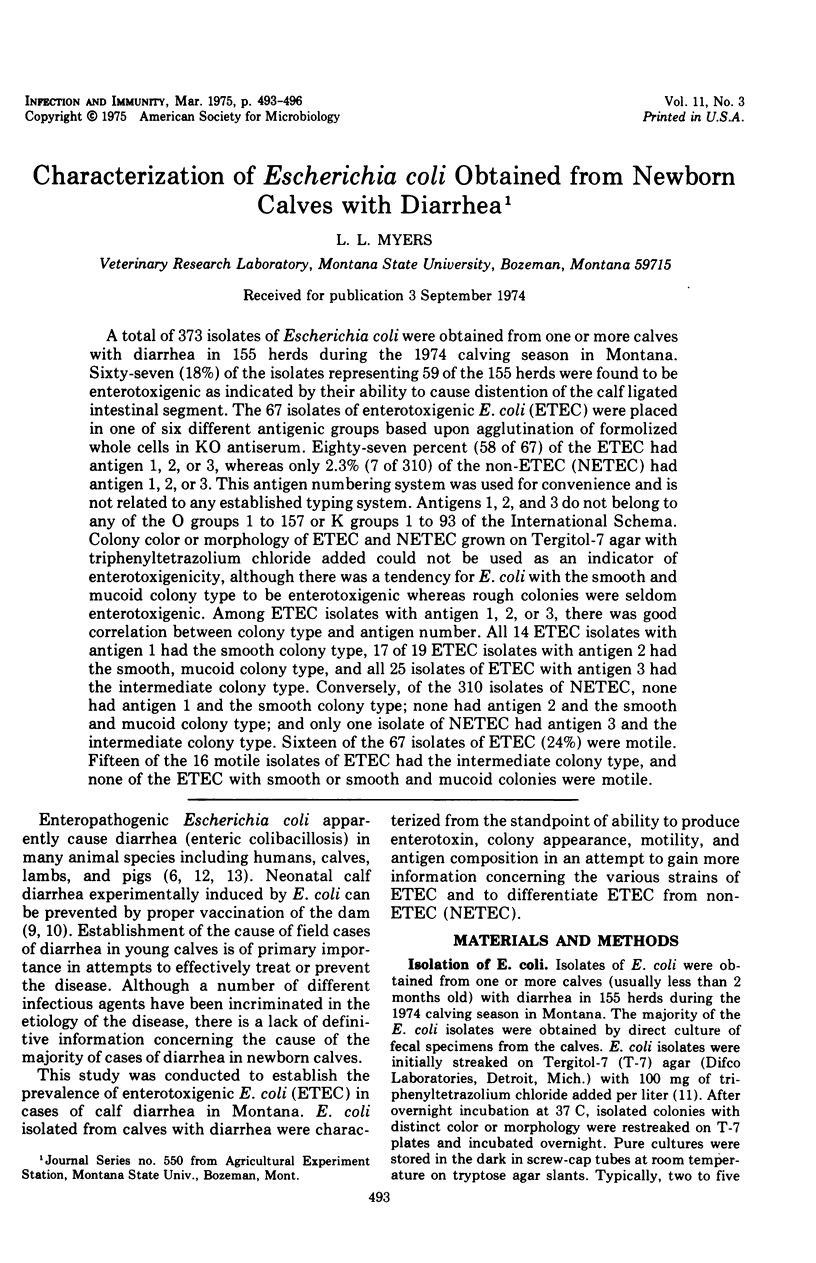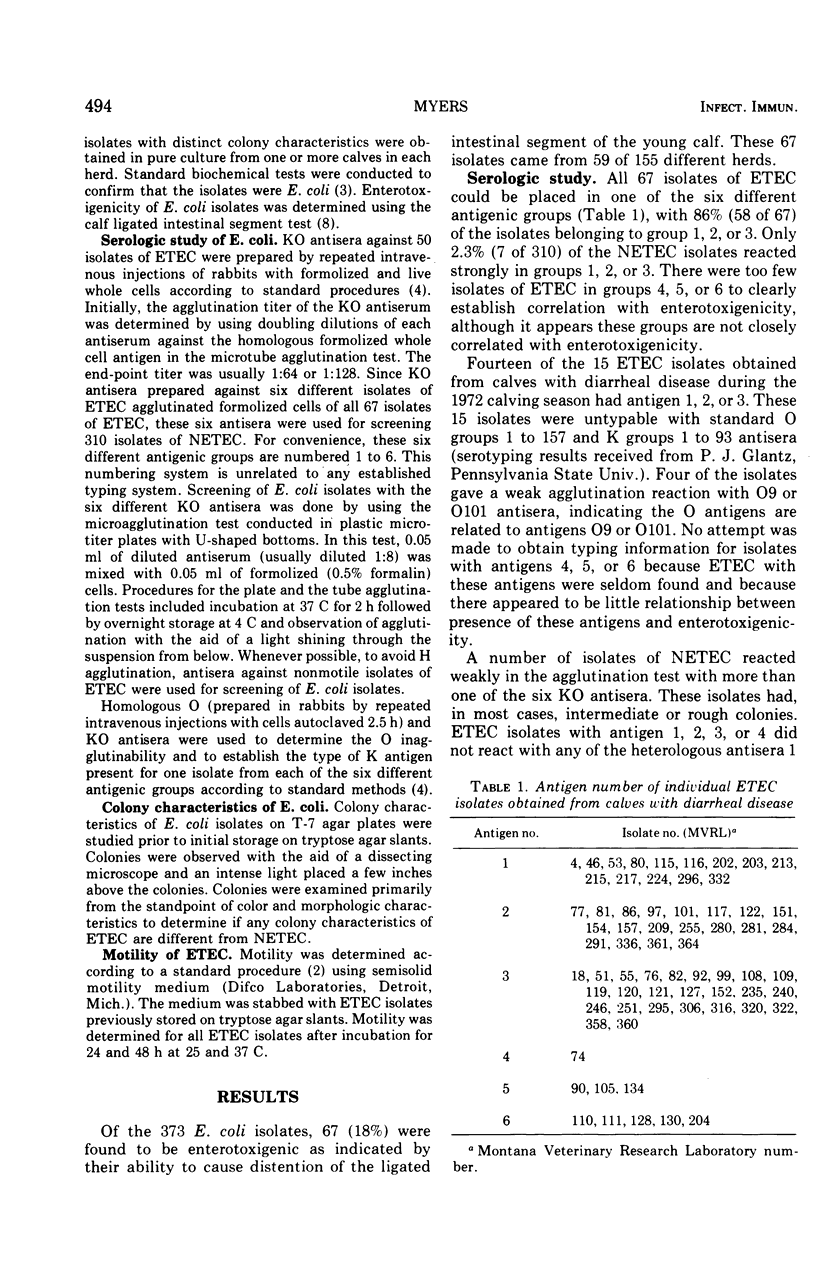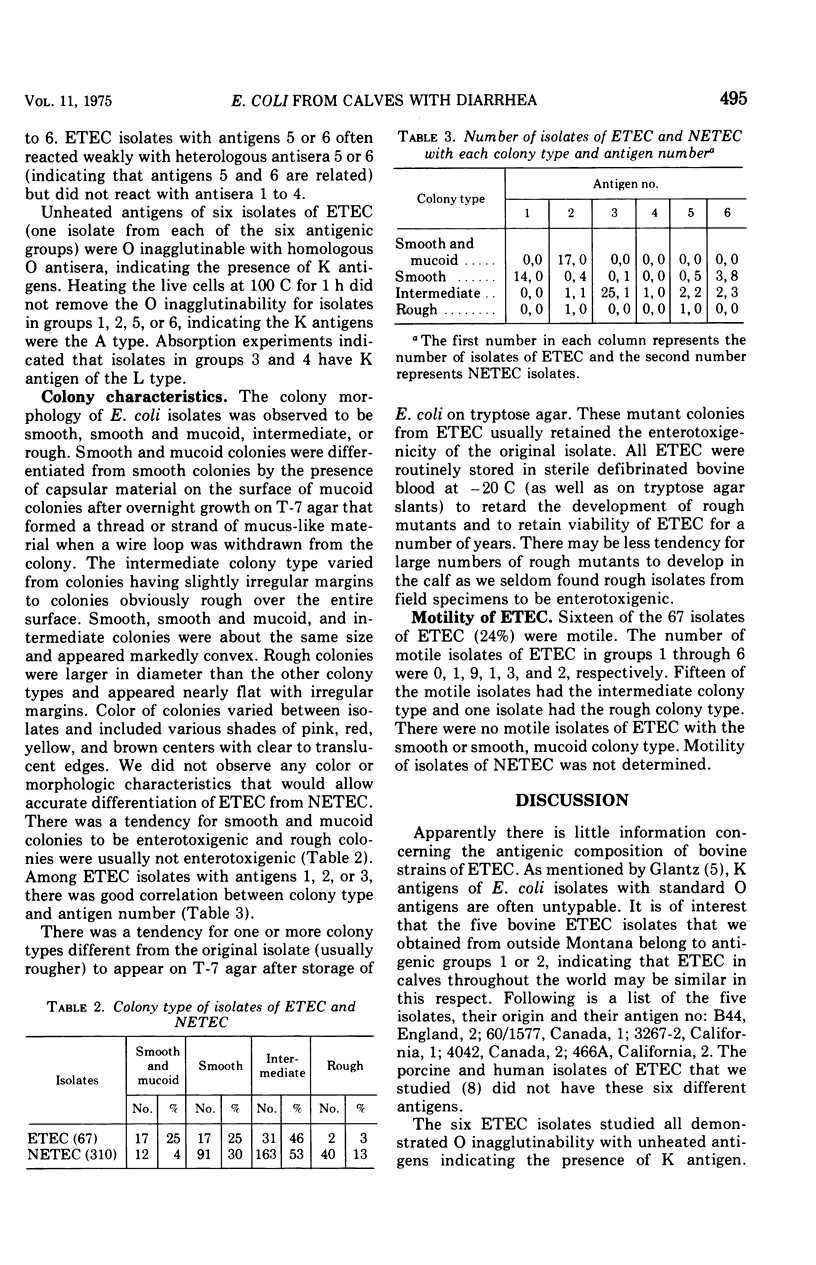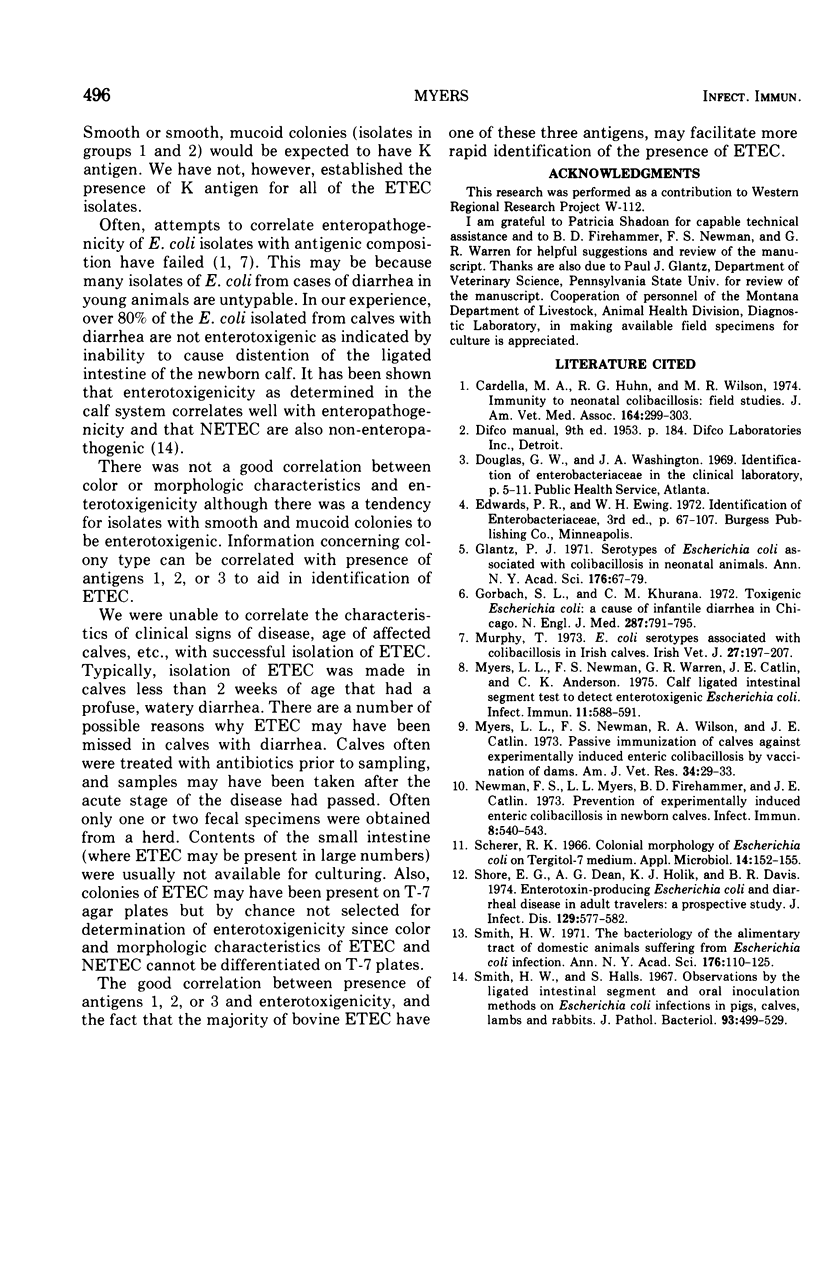Abstract
A total of 373 isolates of Escherichia coli were obtained from one or more calves with diarrhea in 155 herds during the 1974 calving season in Montana. Sixty-seven (18 percent) of the isolates representing 59 of the 155 herds were found to be enterotoxigenic as indicated by their ability to cause distention of the calf ligated intestinal segment. The 67 isolates of enterotoxigenic E. coli (ETEC) were placed in one of six different antigenic groups based upon agglutination of formolized whole cells in KO antiserum. Eighty-seven percent (58 of 67) of the ETEC had antigen 1, 2, or 3, whereas only 2.3 per cent (7 of 310) of the non-ETEC (NETEC) had antigen 1, 2, or 3. This antigen numbering system was used for convenience and is not related to any established typing system. Antigens 1, 2, and 3 do not belong to any of the O groups 1 to 157 or K groups 1 to 93 of the International Schema. Colony color or morphology of ETEC and NETEC grown on Tergitol-7 agar with triphenyltetrazolium chloride added could not be used as an indicator of enterotoxigenicity, although there was a tendency for E. coli with the smooth and mucoid colony type to be enterotoxigenic whereas rough colonies were seldom enterotoxigenic. Among ETEC isolates with antigen 1, 2, or 3, there was good correlation between colony type and antigen number. All 13 ETEC isolates with antigen 1 had the smooth colony type, 17 of 19 ETEC isolates with antigen 2 had the smooth, mucoid colony type, and all 25 isolates of ETEC with antigen 3 had the intermediate colony type. Conversely, of the 310 isolates of NETEC, none had antigen 1 and the smooth colony type; none had antigen 2 and the smooth and mucoid colony type; and only one isolate of NETEC had antigen 3 and the intermediate colony type. Sixteen of the 67 isolates of ETEC (24 percent) were motile. Fifteen of the 16 motile isolates of ETEC had the intermediate colony type, and none of the ETEC with smooth or smooth and mucoid colonies were motile.
Full text
PDF



Selected References
These references are in PubMed. This may not be the complete list of references from this article.
- Cardella M. A., Huhn R. G., Wilson M. R. Immunity to neonatal colibacillosis: field studies. J Am Vet Med Assoc. 1974 Feb 1;164(3):299–303. [PubMed] [Google Scholar]
- Gorbach S. L., Khurana C. M. Toxigenic Escherichia coli: a cause of infantile diarrhea in Chicago. N Engl J Med. 1972 Oct 19;287(16):791–795. doi: 10.1056/NEJM197210192871603. [DOI] [PubMed] [Google Scholar]
- Myers L. L., Newman F. S., Warren G. R., Catlin J. E., Anderson C. K. Calf ligated intestinal segment test to detect enterotoxigenic Escherichia coli. Infect Immun. 1975 Mar;11(3):588–591. doi: 10.1128/iai.11.3.588-591.1975. [DOI] [PMC free article] [PubMed] [Google Scholar]
- Myers L. L., Newman F. S., Wilson R. A., Catlin J. E. Passive immunization of calves against experimentally induced enteric colibacillosis by vaccination of dams. Am J Vet Res. 1973 Jan;34(1):29–33. [PubMed] [Google Scholar]
- Newman F. S., Myers L. L., Firehammer B. D., Catlin J. E. Prevention of experimentally induced enteric colibacillosis in newborn calves. Infect Immun. 1973 Oct;8(4):540–543. doi: 10.1128/iai.8.4.540-543.1973. [DOI] [PMC free article] [PubMed] [Google Scholar]
- Scherer R. K. Colonial morphology of Escherichia coli on Tergitol-7 medium. Appl Microbiol. 1966 Mar;14(2):152–155. doi: 10.1128/am.14.2.152-155.1966. [DOI] [PMC free article] [PubMed] [Google Scholar]
- Shore E. G., Dean A. G., Holik K. J., Davis B. R. Enterotoxin-producing Escherichia coli and diarrheal disease in adult travelers: a prospective study. J Infect Dis. 1974 May;129(5):577–582. doi: 10.1093/infdis/129.5.577. [DOI] [PubMed] [Google Scholar]
- Smith H. W., Halls S. Observations by the ligated intestinal segment and oral inoculation methods on Escherichia coli infections in pigs, calves, lambs and rabbits. J Pathol Bacteriol. 1967 Apr;93(2):499–529. doi: 10.1002/path.1700930211. [DOI] [PubMed] [Google Scholar]


